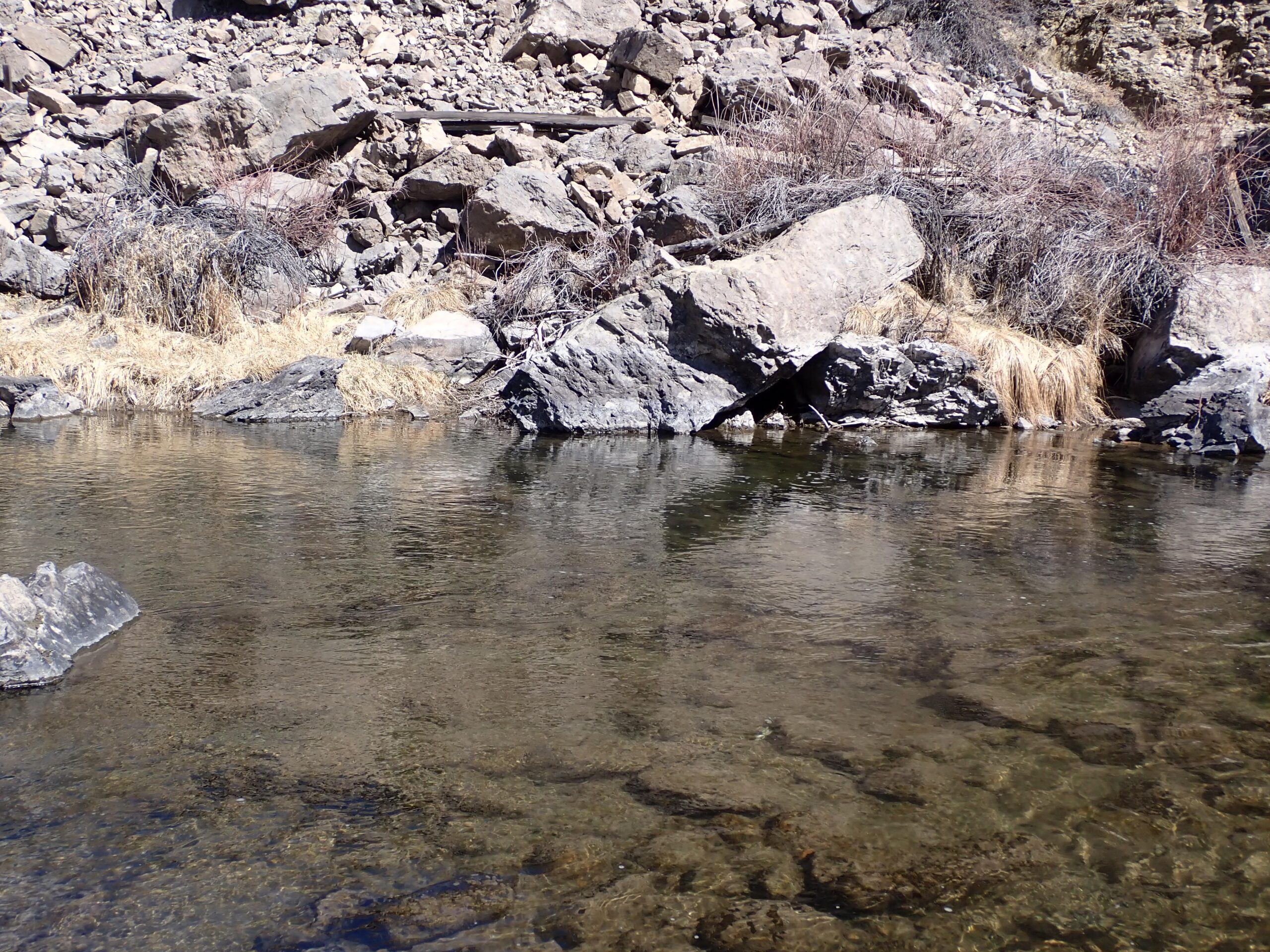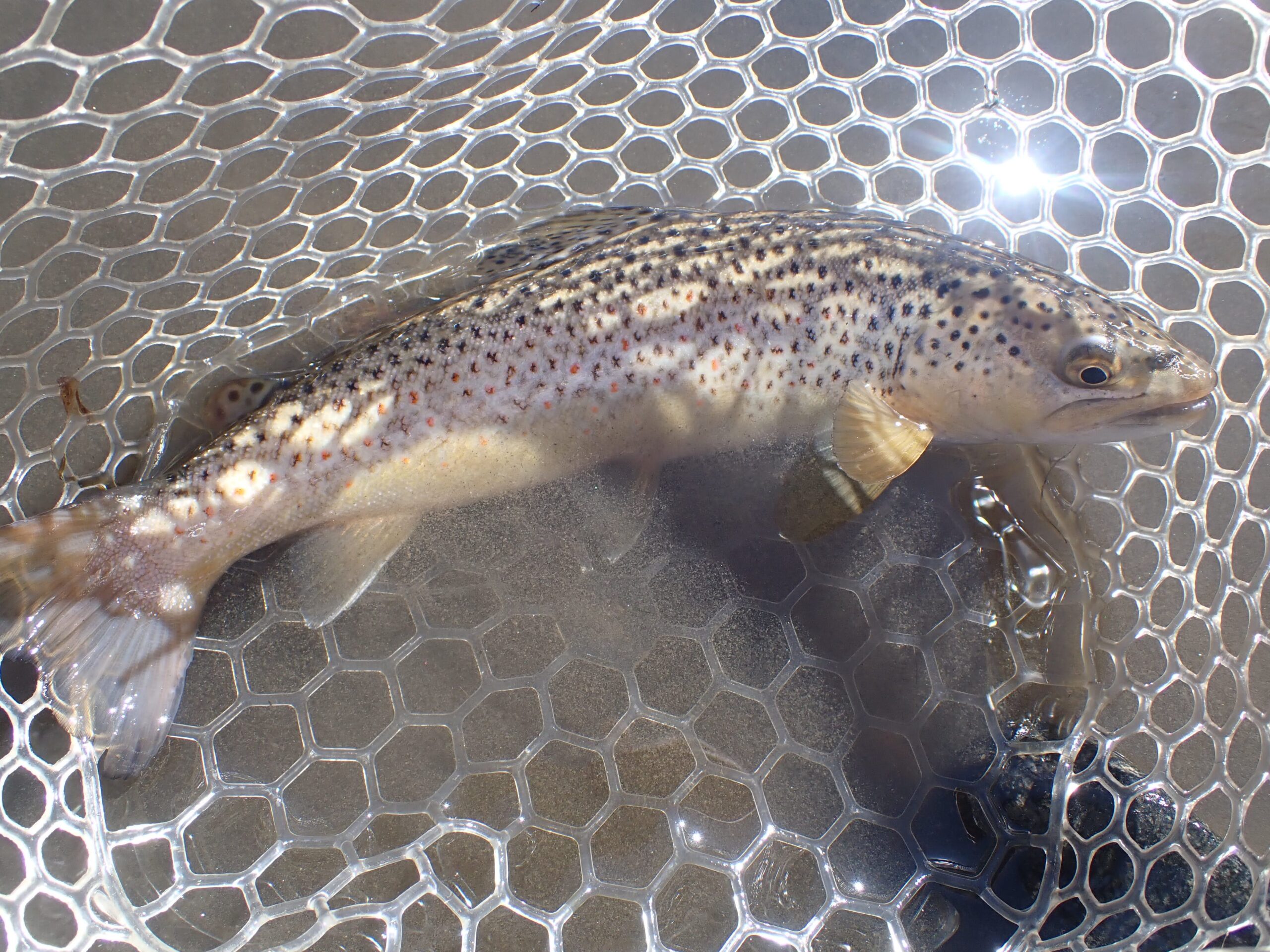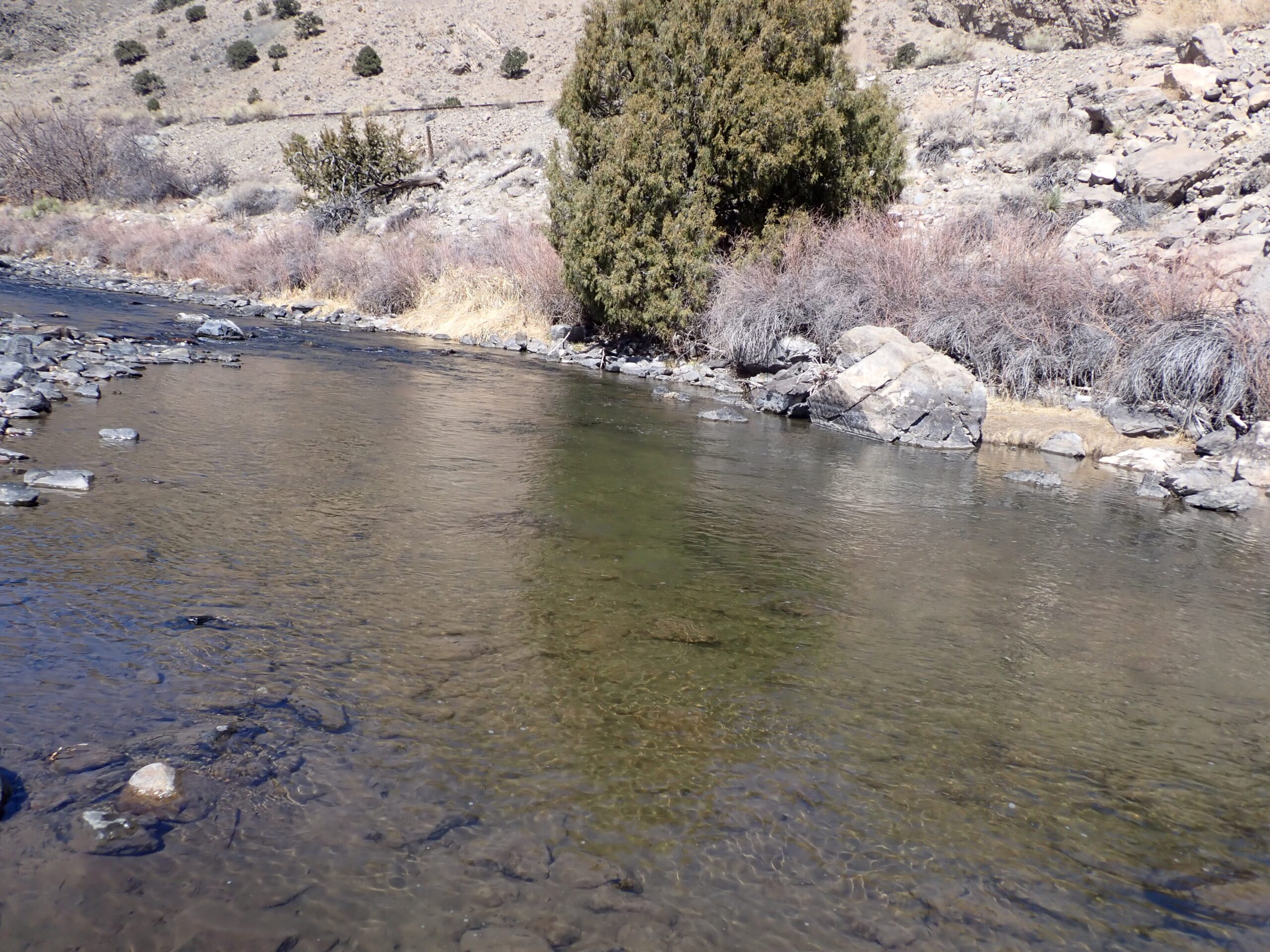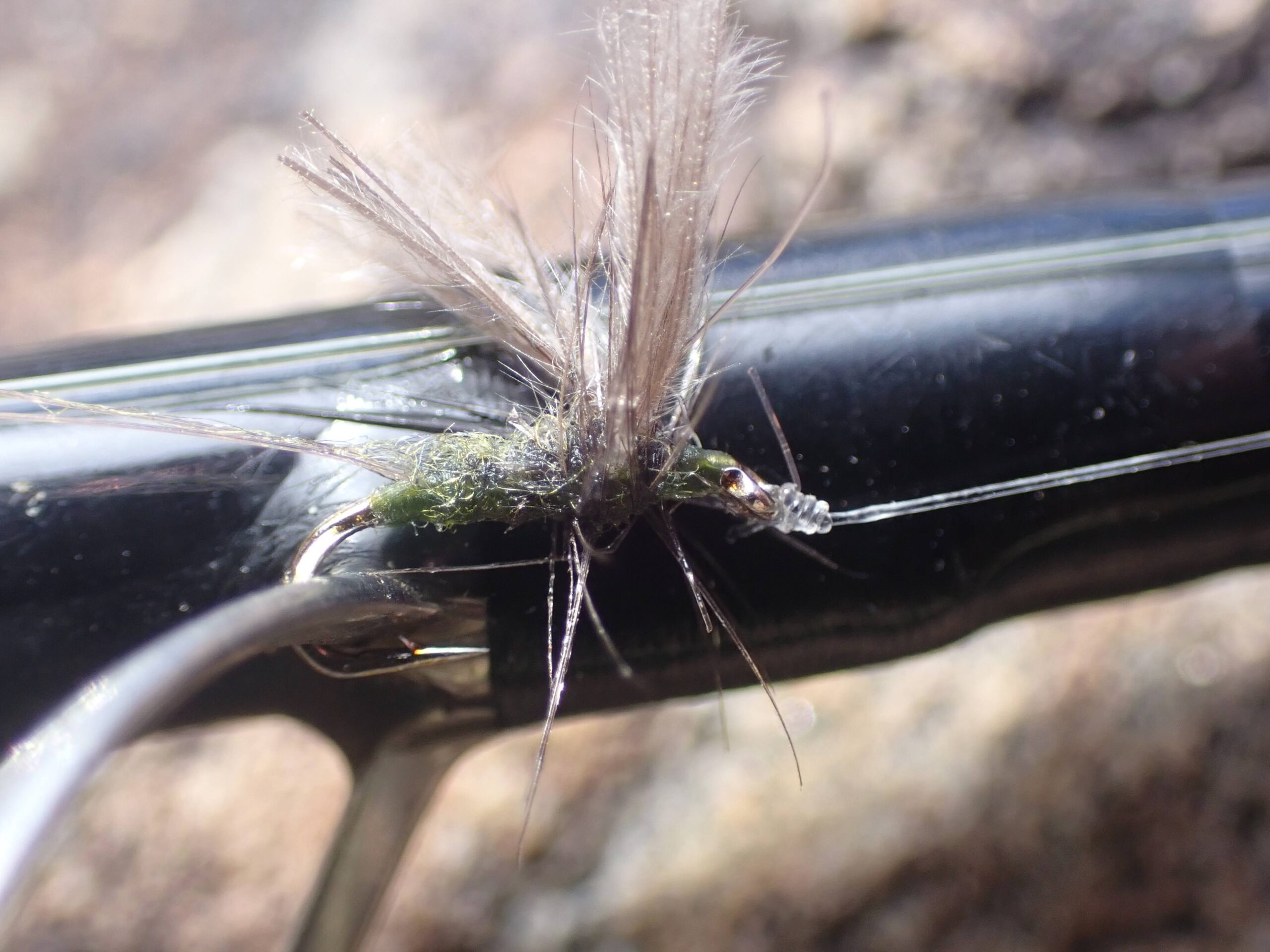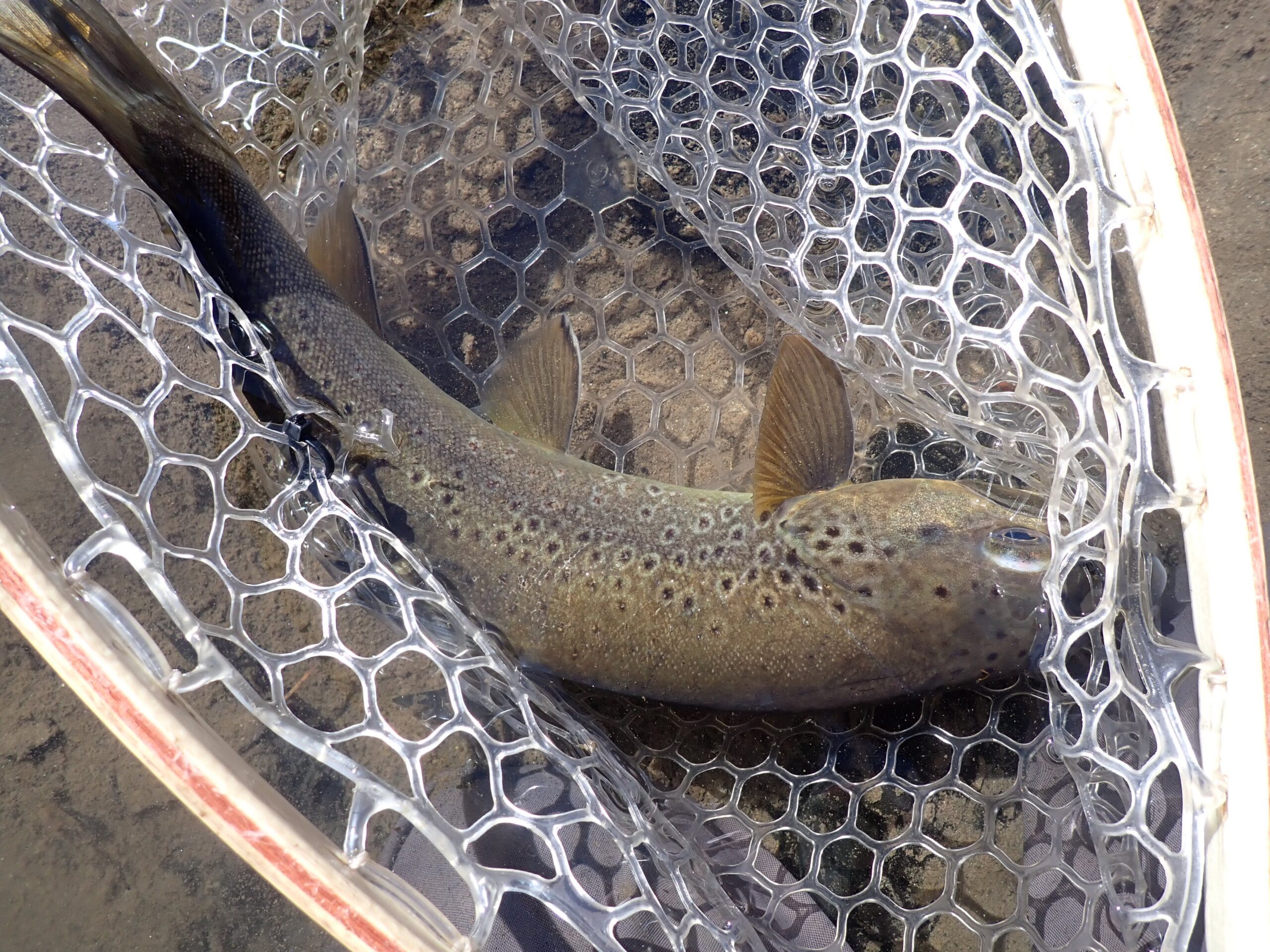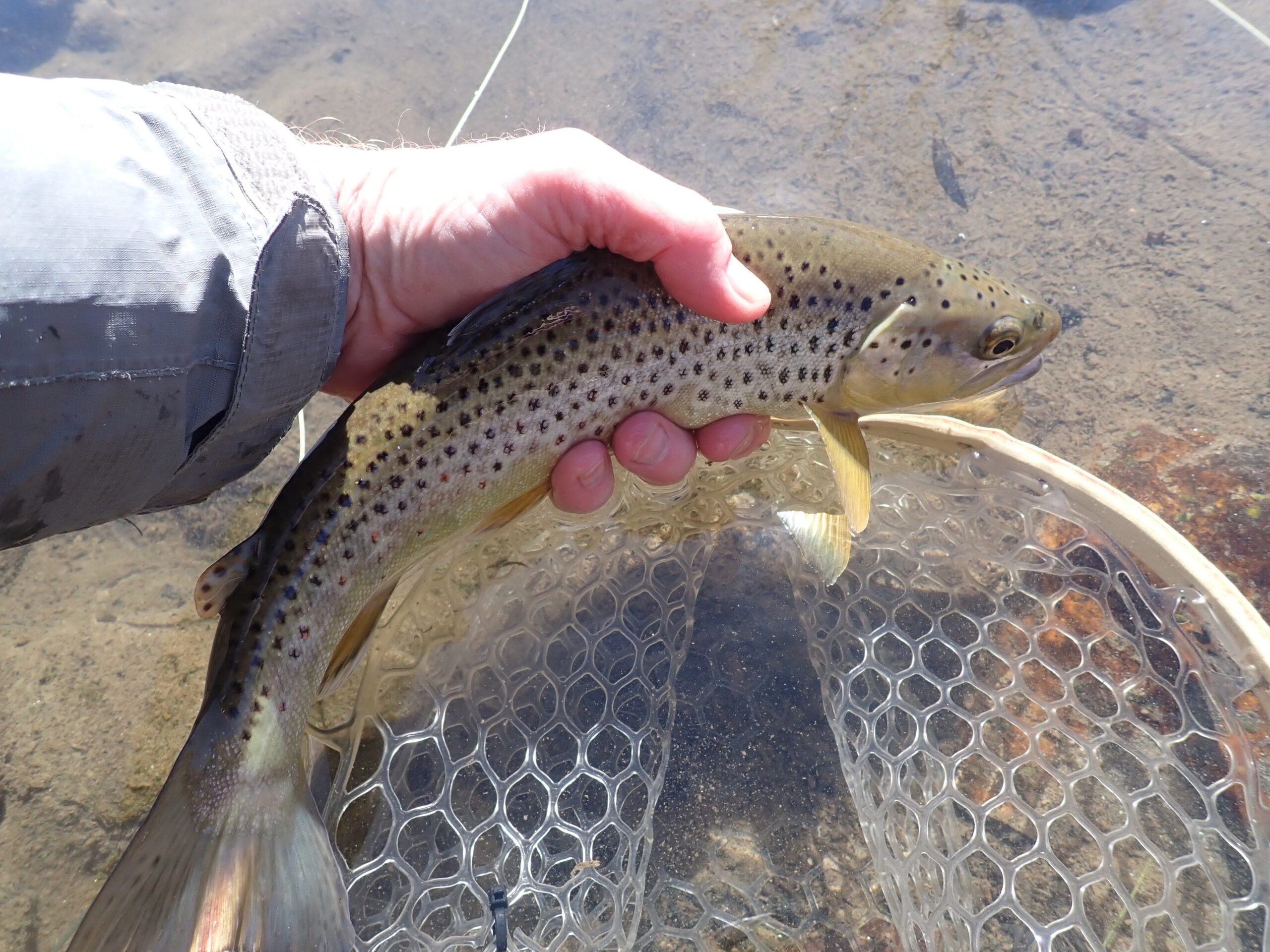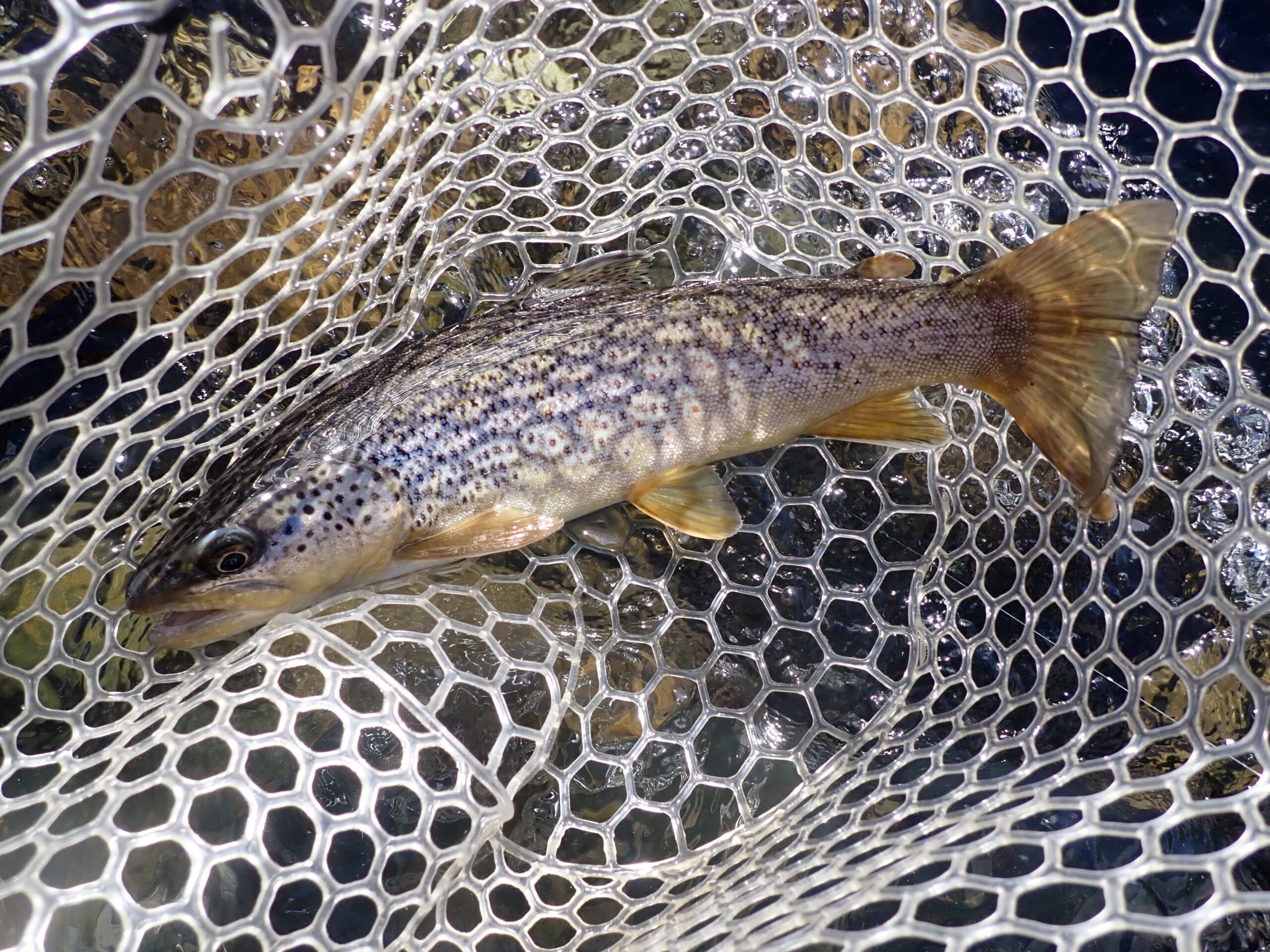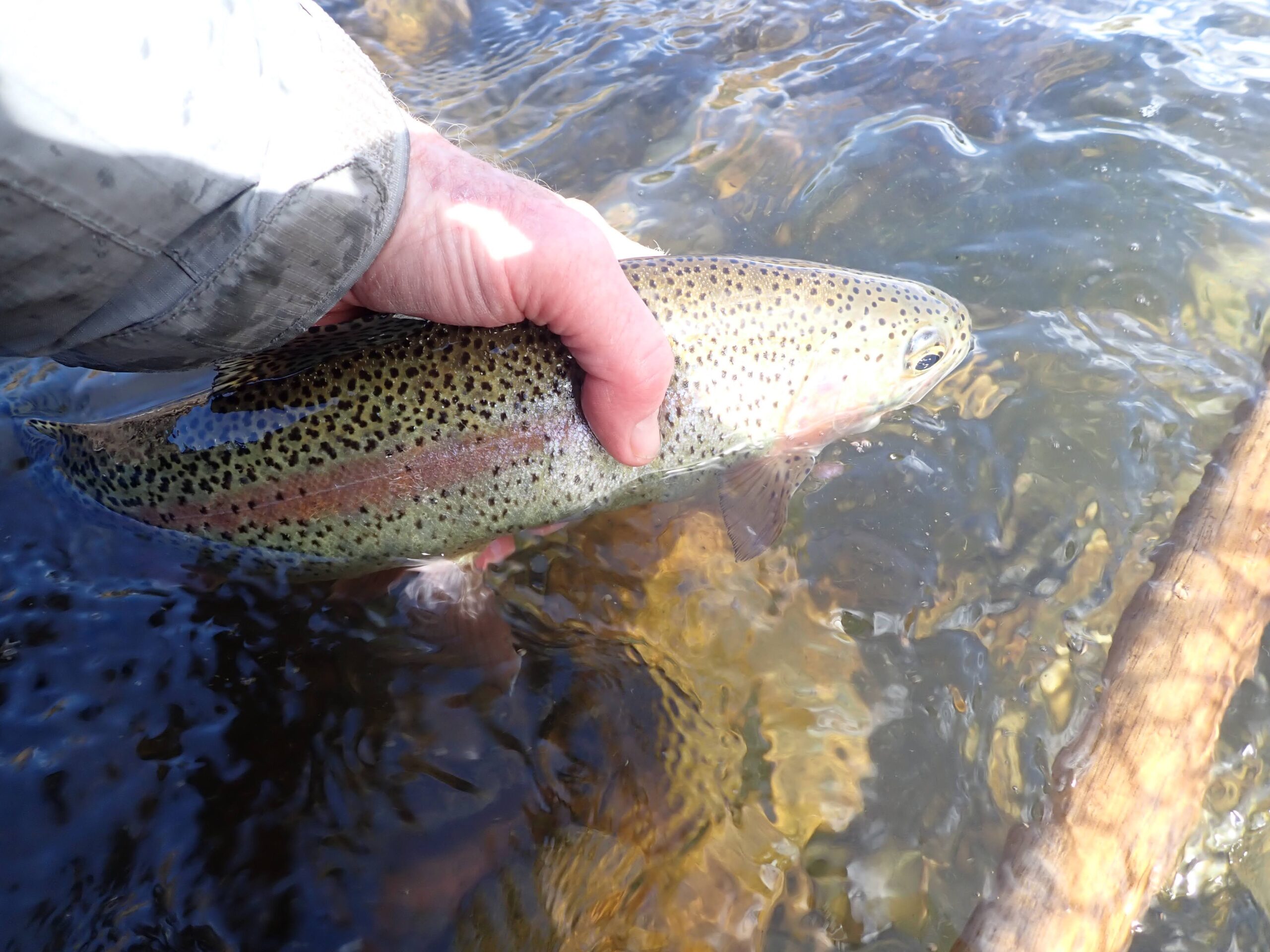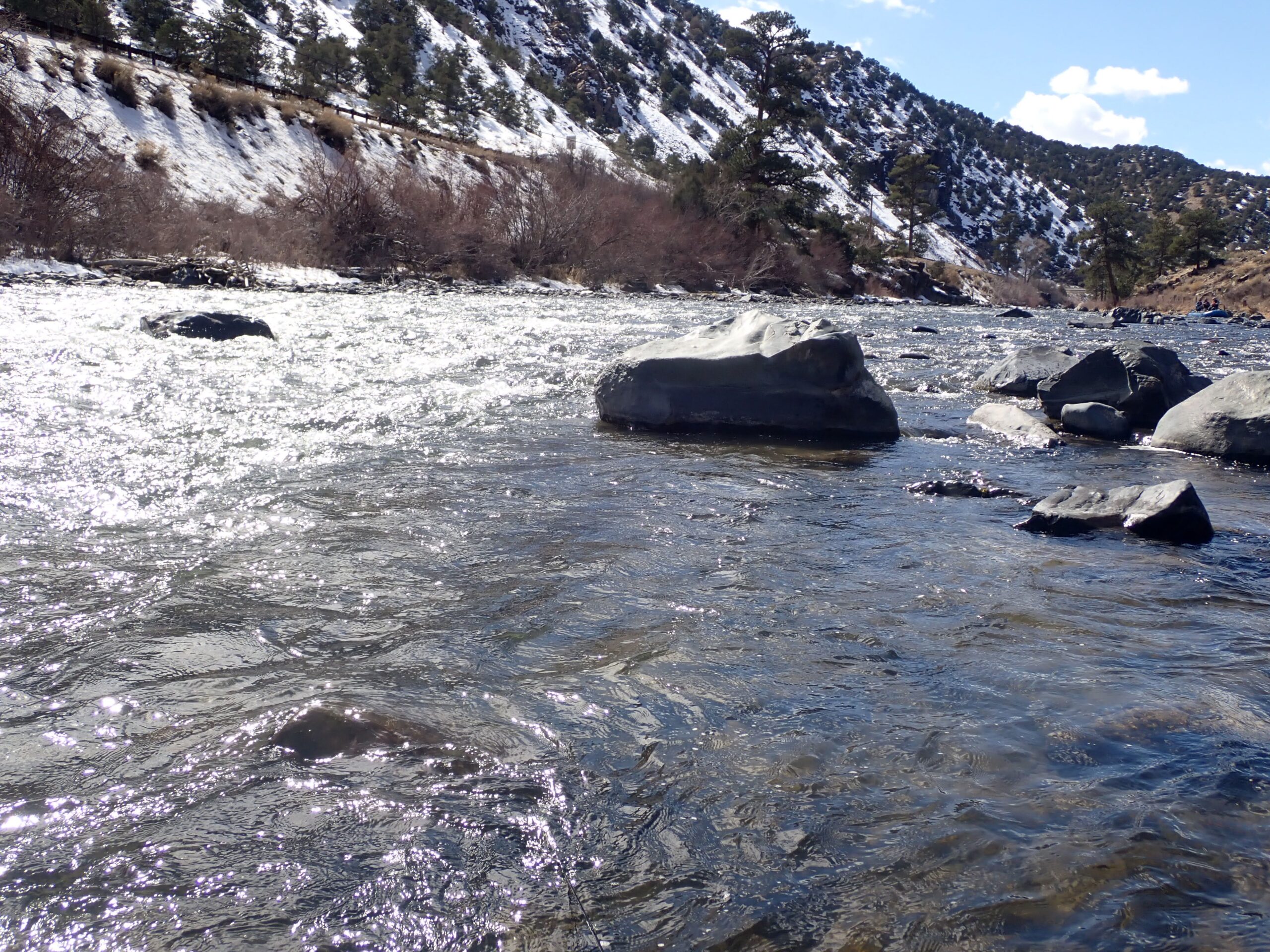Time: 11:30AM – 3:45PM
Location: Big Horn Sheep Canyon
Arkansas River 03/20/2024 Photo Album
My last fishing outing was on 03/12/2024, and my friend, Howie, and I experienced a skunking on Bear Creek. The largest snowstorm of the year swept through Colorado on March 14, and that halted any thoughts I had of visiting a local stream. I celebrated my birthday on Saturday, and for some unknown reason I was wiped out by sickness early Monday morning. This circumstance also interrupted my fly fishing plans; however, by Wednesday, March 20, the first full day of spring, my health and the area rivers were ripe for a day of fishing.
I evaluated my alternatives, but I quickly selected the Arkansas River below Salida for my trip. The weather predicted a high in the mid-fifties with single digit wind speeds, and the fly shop reports documented low and clear river conditions along with mention of midge hatches and some signs of baetis nymph movement. I was itching for a shot at bigger water and potentially larger fish, so I made the three hour drive from my home in Denver to the Big Horn Sheep Canyon section below Salida. On Tuesday evening I perused my blog reports for the Arkansas River from previous visits in March, and this set my expectation for five to ten fish while bottom dredging with stonefly nymphs. It’s early season, so any sort of action was welcome after the March 12 shutout.
When I arrived at the roadside pullout, the dashboard temperature registered a cool 42 degrees, so I slipped into my long sleeved thermal undershirt, North Face light down coat, and rain shell. I chose my billed New Zealand hat with ear flaps, and this bundled outfit kept me warm throughout my time on the water. It was particularly valuable in the first hour, before the sun worked its magic on the air temperature along the river. I fitted together my Sage One five weight rod, and I hiked toward a favorite location on the river only to find another angler stationed in one of my productive long deep runs. I only saw a few parked cars along the highway, but apparently one of the fishermen had the same idea about a fishing site as me.
I stealthily cut down to the river and turned right, so that I was situated fifty yards above him, and I quickly rigged my line with a fish skull sculpin and Mickey Finn streamer. I intended to test out one of the new black ghosts I tied recently, but I left them in the boat box in the car, so I defaulted to the next best classic streamer in my collection, the Mickey Finn. I covered a twenty-five yard section of the river characterized by moderate velocity current and intermediate depth riffles, but I was unable to generate even a follow. I decided to make a longer cast and sweep behind a large exposed rock, but in my haste I lost awareness of my position, and hooked my backcast on a tree limb. I waded to a spot beneath the tree and attempted to spot the two flies, and I was able to identify a section of monofilament. When I moved closer, however, I realized that this was the leader from another unfortunate angler. I stared at the other branches on the limb, and in a short amount of time I saw my broken off streamers. I placed my rod out of harms way, and I scanned the bank for a retrieval instrument.
There it was. An eight foot long dead limb was beneath the tree, so I grabbed it and attempted to bend the small branch that possessed my flies, but it was still alive and not brittle, and, therefore, not prone to breakage. I changed tactics and used one of the protruding nubs on my retrieval branch, and I began to rake downward over the flies, and on the fifth attempt the tip of the branch broke off, and my flies tumbled to the earth, where I was able to capture them. I quickly snipped off the tippet and returned them to my fleece wallet and began my fly fishing day anew.
I was now below a long narrow island that divided the river in half with 75% of the volume on the left and 25% on the right, so I approached the right braid. The low and clear nature of the river precluded streamers, nymphs or large bulky dry flies, so I elected to knot a peacock body hippie stomper to my line. This fly has become a favorite, and I love its buoyancy and visibility and relatively small size for a foam attractor.
As I knotted my new offering to my line, I noticed a couple nervous spots across from me at the tail end of the long pool. It was difficult to discern whether the movement resulted from fish, current waves, or the wind; but I was preoccupied with tying on my fly, so I did not study the scene. Once I was ready, however, I was quite sure that a couple fish were subtly sipping minute food from the surface or just below the surface. My fly was probably not what they were tuned into, but I tossed a couple casts up and across nonetheless, and crush, a fine, wild brown trout of thirteen inches inhaled the attractor dry. This was too good to be true.
I refreshed the fly, and cast a bit higher up in the center current seam, and, whack, another carbon copy brown trout slid into my net. I felt like I was in a dream. Again I dried my stomper, but successive casts failed to elicit a response, yet the regular feeding pace increased, and additional trout showed their presence above to the left and right of the center current. Apparently I duped the dumb ones or the exceptionally hungry members of the school, and now the discerning eaters were teaching me a lesson. I stripped in my hippie stomper and added an eighteen inch section of 5X leader to the bend, and then I attached a CDC blue winged olive (CDC BWO) as the second fly.
For the next forty-five minutes I fired casts to all the sites of recent rises, and I netted an additional four brown trout. Now I was beyond dreamland, and these were all quite nice trout in the thirteen to fourteen inch range. Two temporary hookups added to the action along the channel pool. When I arrived at the top of the pool, I spotted the dorsal fin of the largest feeder in the area, and my heart rate elevated in anticipation of wrangling with the big daddy. Alas, after four or five drifts that did not tempt an eat, I watched the behemoth, as it slowly cruised to a spot of hiding.
I glanced at my watch, and it was now 1:10PM and way beyond my lunchtime, so I found a dry spot on the north bank among some rocks and munched my sandwich and carrots. I observed sporadic blue winged olives, so this confirmed the source of the earlier eating frenzy. From past experience I knew the area across from me was a prime spot, as the river deflected off a high vertical rock wall. A shallow riffle was upstream of the rock, and then a nice run and pool of moderate depth developed. I carefully waded across the river and positioned myself at the upper end of the area, and I fed downstream casts through the entire zone, but the fish were not rising, and the attractor did not work its magic.
By two o’clock I adjourned to the north bank and progressed up the river while prospecting attractive sections of moderate depth and current velocity. Lacking risers, I abandoned the CDC BWO, and I replaced the double dry setup with an emerald caddis pupa and RS2. In a nice long pocket behind some exposed rock, I hooked and landed a thirteen inch brown trout that aggressively attacked the caddis pupa, but in the process of landing, the RS2 broke off. I replaced the RS2 with a size 18 baetis imitation that I tied many years ago from my Scott Sanchez book, and I continued my upstream progression.
After twenty minutes of fruitless casting, and as the wind began to gust in a more significant way, I cast along the seam next to some faster water. I had replaced the hippie stomper with a yellow fat Albert for better visibility in the afternoon glare, and suddenly the fat Albert dove. I reacted with a quick set, and the battle ensued. In this case I eventually hoisted a fifteen inch rainbow trout into my net, and it displayed the twenty plus year old baetis in its lip. Wonders never cease.
By 3:15PM I reached my crossing point, so I carefully shuffled across and climbed the roadside bank and then investigated the long smooth pool below the high rock bluff next to the car. I was unable to spot fish, and had it not been so close to quitting time, I would have switched to a deep nymphing rig. But I was weary and close to the end, so I stayed with the dry/dropper and fished the twenty-five yard section of moderate riffles over a rocky bottom that led into the pool. Nothing. I concluded that my leader was too short and rather than bother to lengthen it, I swapped the emerald caddis pupa for a weighted size 12 20 incher with a beadhead. That did not work either, so I reeled up the slack and called it quits at 3:45PM.
What a day! This was easily the best day of the year so far. Eight fish in 3.5 hours of fishing is not exceptional, but the quality of the fish was outstanding with a size range from twelve to fifteen inches. Every fish was a wild and healthy battler, and I was thankful for that. Icing on the cake was landing six beauties on dry flies. Fishing successfully to rising fish on March 20 is something to embrace and remember.
Fish Landed: 8

